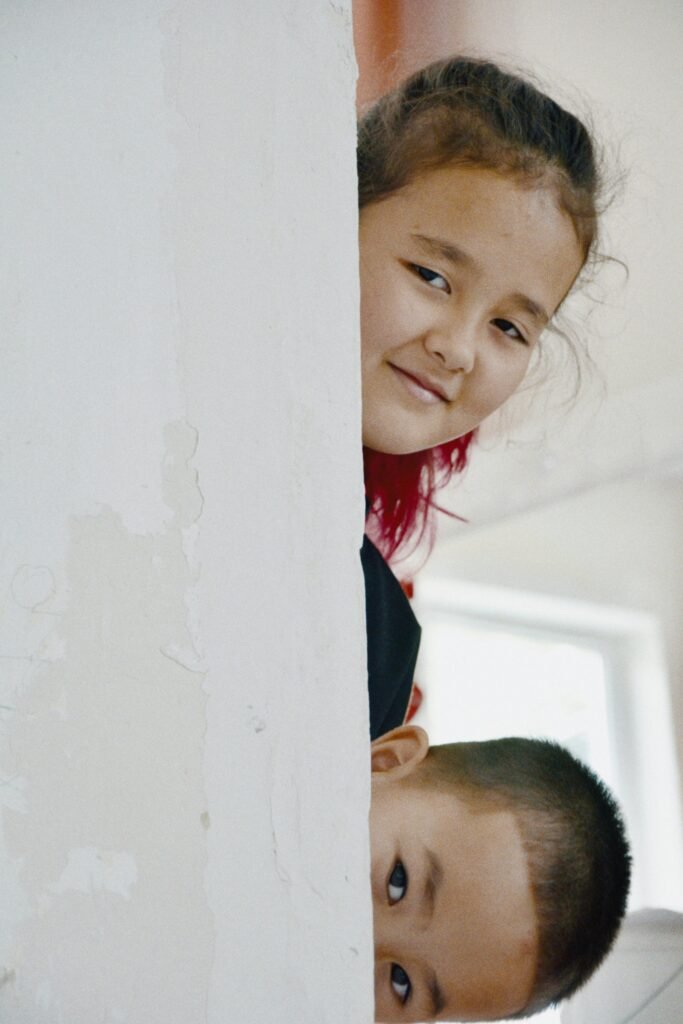
Childproofing your bathroom is crucial to ensure the safety of your little ones. With its many potential hazards, such as slippery floors, electrical outlets, and toxic cleaning products, taking measures to childproof this space is essential. In this article, we will explore effective ways to make your bathroom safe for your children, providing you with peace of mind and a secure environment for them to enjoy.
Toilet Safety
When it comes to keeping your bathroom safe, toilet safety should be a top priority. One simple yet effective way to prevent accidents is by installing a toilet lock. This will ensure that your curious little ones don’t have access to the toilet bowl, reducing the risk of drowning or injuries. Additionally, be sure to always keep the toilet lid closed, as an open lid can be an invitation for accidents. By closing the lid, you create a barrier that prevents children from falling in or from accidentally dropping objects into the toilet.
To further enhance toilet safety, it’s advisable to position the toilet paper out of reach of small children. Young kids can be quite imaginative, and giving them access to toilet paper can result in unraveled rolls scattered throughout the bathroom. By keeping the toilet paper out of their reach, you not only minimize the mess but also eliminate the risk of them obstructing the toilet or choking on it.
Slip and Fall Prevention
Slippery surfaces in the bathroom can be a recipe for disaster, especially for young children and the elderly. To prevent slip and fall accidents, it’s a good idea to use non-slip mats or rugs on the bathroom floor. These mats are designed with special materials that provide traction and grip, reducing the chances of a fall. Place them strategically near the toilet, bathtub, and sink areas to create a safer environment.
Installing grab bars is another essential step in slip and fall prevention. These sturdy bars provide leverage and support for everyone using the bathroom, reducing the risk of accidents when getting in and out of the bathtub or shower. Make sure the grab bars are securely attached to the wall and at a height that is easily accessible for both children and adults.
In addition to using mats and grab bars, keeping the floor clean and dry is crucial for preventing accidents. Regularly mop up any spilled water or other liquids to maintain a dry and safe bathroom environment. By being proactive and vigilant about cleaning up after each use, you can significantly reduce the chances of slips and falls.

This image is property of images.pexels.com.
Water Temperature Control
To ensure safe bathing experiences, it is vital to adjust the water heater temperature in your bathroom. The ideal water temperature for bathing children is around 100 degrees Fahrenheit (38 degrees Celsius). By setting the water heater at this temperature, you can prevent burns and scalds. Remember, young children have more sensitive skin than adults, making them more susceptible to burns from hot water.
Before bath time, always test the water temperature to ensure it’s not too hot. You can use a bath thermometer or simply dip your hand into the water to gauge the temperature. If the water feels too hot, immediately adjust the temperature or wait until it cools down before allowing your child to get into the bathtub. This simple precaution can save your child from painful burns and make bath time a safe and enjoyable experience.
Electrical Safety
Electrical safety is paramount in any part of the house, and the bathroom is no exception. Covering electrical outlets is an important step in childproofing your bathroom. Plastic outlet covers or outlet plugs can be easily inserted into the sockets to prevent children from inserting objects or their fingers, minimizing the risk of electrical shocks.
Keeping electrical cords out of reach is another key safety measure. Children are naturally curious and may be tempted to play with or chew on cords, which poses a significant danger. Use cord organizers and keep the cords neatly tucked away, out of sight and out of reach. This not only reduces the risk of electrocution but also helps to maintain a tidy and organized bathroom space.

This image is property of images.pexels.com.
Medicine and Chemical Storage
The bathroom often serves as a storage area for medications and cleaning products, making it crucial to secure these potentially hazardous items. Locking up medicines and cleaning products in a designated area is an effective way to keep them out of reach of children. Install cabinets with childproof locks to ensure that curious little hands cannot access dangerous substances.
Using child-resistant containers is another important safety measure. When storing medications or cleaning products, opt for containers with child-resistant caps or lids. These containers are designed to make it challenging for children to open them, adding an extra layer of protection. However, it’s still essential to keep them out of reach and store them securely, even with child-resistant features.
To further ensure bathroom safety, it is crucial to keep chemicals away from the reach of children. This includes not only cleaning products but also potentially harmful substances like bleach, toilet bowl cleaners, and drain cleaners. Store these items high up or in locked cabinets to prevent accidental ingestion or exposure, which can have serious consequences for a child’s health.
Storage and Organization
Proper storage and organization in the bathroom play a significant role in maintaining a safe environment. Sharp objects like razors, scissors, and grooming tools should be stored safely, out of reach of children. Consider using lockable cabinets or drawers to secure these items. Keep in mind that children are naturally curious and can easily get their hands on small objects, so it’s important to keep them out of reach.
Securing cabinets with childproof locks is another essential step in bathroom safety. Cabinets may contain a variety of potentially hazardous items, ranging from medications and cleaning products to personal care items. By installing childproof locks, you provide an additional barrier that prevents children from accessing these items. This is particularly important if you have a curious and exploring toddler or young child in your home.
Keeping small objects out of reach is crucial to prevent choking hazards. Children have a tendency to put things in their mouths, and small items like beads, buttons, or even hair accessories can pose a choking risk. Be mindful of what small objects are present in your bathroom and ensure they are stored securely, away from curious hands and mouths.

This image is property of images.pexels.com.
Sharp Edges Protection
Bathroom fixtures and accessories, such as countertops, shelves, and even certain types of faucets, can have sharp corners that pose a risk, especially for young children. Applying edge guards to these sharp corners is an effective way to prevent injuries caused by accidental bumps and falls. These guard products are typically made of soft, cushioned materials that absorb impact and protect against cuts and bruises.
When it comes to bathroom accessories, it’s advisable to avoid glass items whenever possible. Glass can break easily, resulting in sharp fragments that can cause severe injuries if mishandled or accidentally dropped. Opt for non-glass alternatives, such as plastic or stainless steel accessories, to reduce the risk of cuts and lacerations in the bathroom.
Water Drowning Prevention
Water and drowning are significant concerns when it comes to bathroom safety, particularly for young children. Never leave a child unattended in the bathtub, even for a few seconds. Accidents can happen in an instant, and it only takes a small amount of water for a child to drown. Always stay within arm’s reach of your child while they are in the bathtub or any other water-filled area of the bathroom.
Furthermore, it is essential to empty buckets and containers immediately after use. Young children are naturally curious and can easily topple over a water-filled bucket. Even shallow amounts of water pose a drowning risk. To prevent accidents, promptly empty all containers and store them out of reach when not in use. This simple action can significantly reduce the risk of drowning in the bathroom.
Toiletries and Cosmetics
Toiletries and cosmetics are common items found in many bathrooms, but they can pose significant hazards to children if not properly stored. Store these items out of reach, high up in cabinets or drawers that are secured with childproof locks. Make it a habit to return these items to their designated storage area immediately after use to minimize the possibility of accidents.
Additionally, be mindful of potentially hazardous items and lock them up. Certain toiletries or cosmetics may contain ingredients that can be harmful if ingested or come into contact with the skin. Locking them up not only protects your child from accidents but also ensures the longevity and quality of these products.
Educate and Supervise
While implementing safety measures is crucial, educating and supervising your child in the bathroom are equally important. Teach your child bathroom safety rules, such as not playing with electrical outlets, not climbing on countertops, and always asking for assistance when needing to use the toilet. By providing clear instructions and boundaries, you empower your child to make safe choices.
Supervision is key to ensuring your child’s safety in the bathroom. Never leave your child unattended, especially if they are young or have limited mobility. Accidents can happen quickly, and being present to respond immediately can prevent serious injuries. By actively supervising your child in the bathroom, you can address potential hazards in real-time and provide guidance when needed.
In conclusion, childproofing your bathroom is a crucial step in ensuring the safety and well-being of your child. By implementing the recommended safety measures, such as installing a toilet lock, using non-slip mats, and securing potentially hazardous items, you can create a bathroom environment that minimizes the risk of accidents. Remember, the bathroom should be a safe and enjoyable space for everyone in your home, and with these precautions in place, you can achieve just that.

